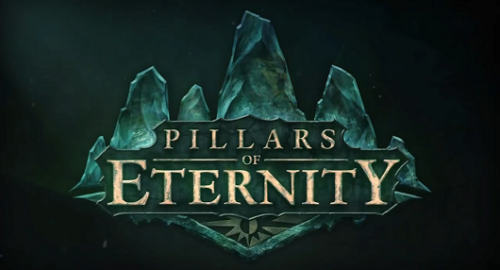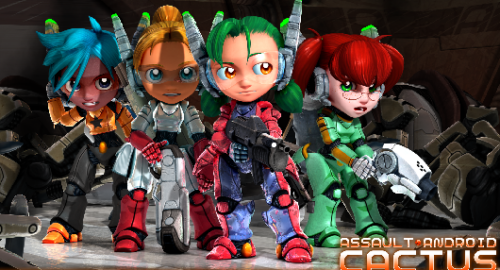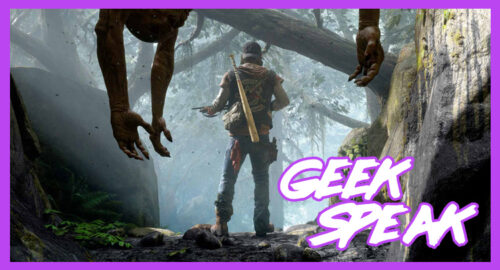Back in 2011 Bandai Namco published From Software’s now iconic Dark Souls and helped create a new genre of game affectionately known as ‘soulslike’. It’s a genre that never really clicked with me (a quick read of my old Dark Souls 2 preview highlights that to embarrassing effect), but last year I lost a bet to a friend and had to play through Bloodborne, and that’s when everything changed for me. I discovered my new favourite game genre and couldn’t wait to see what else was out there.
• Developer: Bandai Namco Studios
• Publisher: Bandai Namco Entertainment
• Available On: PlayStation 4, Windows PC, Xbox One
• Release Date: Available Now

Around this time it was announced that Code Vein, Bandai Namco Studios own attempt at the soulslike genre, had been delayed until September 2019 to further polish the gameplay. It piqued my interest and after 12 long months I finally got to play this new addition to the soulslike genre.
Code Vein shares a lot of DNA with its spiritual predecessors, enough to be instantly familiar to fans of the genre, but with enough ideas and mechanics of its own to be a fun experience unique to itself, wearing its inspiration on its lace-trimmed sleeve without ever becoming just another Souls clone.
Taking place in a post-apocalyptic future where creatures called Revenants (Code Vein’s take on Vampires) are the dominant life form, humans are a dying breed, and the world around them has been utterly decimated by war. Code Vein sees your character waking up with amnesia, and after some misfortune, join up with a group of Revenants researching Bloodsprings, a supernatural food source for the Revenants.
At least that’s the overarching story for the first five hours in a nutshell. There’s a lot more to it than that and a whole lot more to discover over the 25 – 30 hours it’ll take you to finish the story. And there is a lot of story. Too much in fact. I’d find myself getting into a real rhythm with the gameplay only for it to stop for several minutes while the characters spouted convoluted exposition at one another.

It’s a weird thing to complain about, I know, but Code Vein does such a good job of borrowing everything else from the Dark Souls series it’s frustrating that it couldn’t have gone with the “if you want it, go and find it” approach to storytelling and world building and left the gameplay mostly uninterrupted. There is absolutely nothing left to the imagination here, and I feel this style of gameplay works best when the discovery of the worlds deeper lore is left to the player. And discovery is a big part of Code Vein.
The world is vast and connected, with several areas to explore. There isn’t much to look at environment wise, most of Code Vein’s landscape is a variation of a theme; destroyed city, outskirts of destroyed city, destroyed city with different weather, destroyed city with different climate. However, there are a couple of environments so far removed from the rest of the game’s architecture it’s staggering. One area in particular, appears around 6 hours into the story and my jaw hit the floor when I saw it, and on top of looking great it is one of the best designed areas I’ve had the joy of exploring in any game in a very long time.
For the most part Code Vein stays at a consistent frame rate which didn’t drop even during the busiest boss battles, but there are some huge performance issues when moving from area to area. Code Vein’s expansive areas are connected by long tunnels void of enemies. When a certain point is crossed the game throws up a fog wall where you entered, unloads the area you were just exploring and loads in the area you’re heading toward. It’s a neat trick that sells the illusion of a giant world, or at least it would, if the frame rate during these moments didn’t drop so severely.
This issue is even noticeable when playing on a PlayStation 4 Pro. It isn’t game breaking by any stretch, and it’s a small price to pay to allow almost flawless performance in every other area of the game, but I thought it was worth mentioning anyway as I found it jarring whenever it happened during my playthroughs.

One of Code Vein’s many highlights is its combat. Controls are simple enough, the button layout is similar enough to Dark Souls/Bloodborne that anyone familiar with those games will be able to pick it up immediately.
However, it did take a few minutes for me to get used to square and triangle being the attack buttons as opposed to R1, which is Code Vein’s sprint button, which led to some confusing moments where I was hammering the R1 button and getting frustrated that my character wasn’t attacking. That was entirely my own stupid fault, however, and not a problem with the game itself. Code Vein’s controls are wonderfully tight and responsive when you actually press the correct buttons.
Abilities in Code Vein are known as Gifts, and up to eight active Gifts can be equipped at a time, four mapped to the face buttons and four to the d-pad. They come in a variety of flavours such as buffs, debuffs, remedies, projectile and melee attacks, and can be activated by holding down R2 and pressing the corresponding button.
Activating a Gift uses up Ichor, Code Veins version of ability points, which is replenished through attacking enemies, drain attacks (such as backstabs), and by using items found around the world or bought from the shop back at HQ. Drain attacks also increase the player characters’ maximum Ichor which encourages tactical combat (and lots of backstabbing) as the more Ichor the player has the more Gifts they can use, and believe me when I say you’re going to need to use your Gifts.

Combat is fast-paced and aggressive, and I found blocking to be all but useless for most encounters (I was using the single-handed sword), instead I found myself relying on the incredibly effective dodge. Dodge has a lovely amount of distance to it, and the very brief invincibility it offers allows for some truly exhilarating encounters; dodging out of and into a bosses’ attacks feels fantastic and goes a long way to selling your character as an all-powerful Revenant.
The combination of melee attacks and Gift usage is what sets Code Vein apart from the games that inspired it. Enemies will often swarm you, and at certain points in a level a warning will flash up on the screen telling you the Lost (Code Vein’s monsters) have invaded the area, and you’ll be forced into a kind of Horde Mode as several waves of enemies make a beeline for you and attack without mercy. I found these moments to be overwhelming at first, but as the combat began to click they became genuinely exhilarating and even fun.
Where Code Vein excels is in its character customisation. The character creator itself is great, and although limited in the amount of faces and hairstyles available to choose from (I was disappointed to see a total lack of a Mohawk hairstyle, especially considering this is set in a post-apocalyptic world), it more than makes up for in accessories, colour options, and even eyebrows, allowing for some truly imaginative avatars.
It’s the Blood Codes and Gifts, however, where the meat of the customisation lies. The easiest way to think of Blood Codes are as character classes, and thanks to an innate ability exclusive to the player character, they are able to use any Blood Code they find and switch them out whenever they like in the menu.

Each Blood Code has its own unique Gifts that are unlocked by spending Haze, or by finding Vestige’s in an area and witnessing the memory locked within. Viewing memories is a wonderful gimmick at first and a great way to find out more about the world you’re in, but the constant pausing of the action to experience these vignettes soon becomes annoying.
Equipped Gifts earn their own experience points when killing enemies, and eventually the player character can master them, allowing them to use that Gift with a different Blood Code equipped. This is a great system that encourages experimentation with different Blood Codes, and the more Blood Codes you try, the more Gifts you unlock, the more powerful your player character will become.
However, the only real difference between Blood Codes are the character stats they offer. I didn’t notice any real change in gameplay when I used different Blood Codes, and after my character had levelled up a few times I could use my sword with all Blood Codes so was able to swap them out and grind new Gifts with ease.
That sounds like a complaint, but it really isn’t. I didn’t mind at all and thoroughly enjoyed the freedom Code Vein offered me to create and mould the character and play style of my choosing. Selecting the passive and active gifts from an ever-growing library allowed me to create a character that completely complimented my style, and when I hit a wall (usually one of the tougher bosses) all it took was a bit of grinding and Gift reorganisation to succeed. I never felt punished for building a character my way.

Blood Veils (Code Vein’s version of armour) and weapons add another level of customisation to your character. They each increase different statistics that will help benefit your own playstyle. Want to be right in the action? Strong defence and high HP might be a good idea. Prefer to stand back and use projectiles? High ailment and elemental stats and increased Ichor is the way to go. Most Blood Veils can be used with all Blood Codes, however there are a couple that are specialist and can only be used with certain Blood Codes.
The freedom to customise your character through Gifts means the levelling up in Code Vein is extremely streamlined. You use Haze, Code Vein’s version of experience points/currency, which is acquired by killing enemies and selling items to level up you character, increasing their stats. You do this when resting at Mistle, which also replenishes your characters health and Ichor, as well as respawning any enemies you killed in the area.
Haze (along with special items found out in the world) is also used to upgrade and transform your characters weapons and Blood Veils making them stronger, as well as buying weapons, Blood Veils, and items from the games vendor. If you die, you lose you Haze but have an opportunity to reclaim it if you can make it back to the area you died and pick up the glowing puddle from the floor. However, if you die on your way back to your Haze puddle you lose that Haze and instead receive a soul-crushing feeling in your chest as you realise the 400,000 Haze you were carrying is gone forever.
You have an AI partner to accompany you on your journey. It’s a nice idea, but it isn’t as well implemented as it could be. There’s no option to change their behaviour, which in my opinion should be the bare minimum offering when including computer-controlled partners. I don’t mean Final Fantasy XII levels of complexity either, just the option to have them attack the same enemy as the player character would have been nice. The AI isn’t inherently bad, it just makes really stupid decisions at times (and caused me to lose several encounters) that could have been fixed with a couple of options.

The most annoying thing about the AI partner, however, is they never shut up. They comment on absolutely everything that’s going, like a child who has just learned what things are and just has to tell the world. Again, as with the AI behaviour, an option to switch their dialogue off for all but the important scenes would have solved this problem and given me one less thing to complain about.
Seeing as I’m already having a moan I may as well say this, Code Vein is one of the most tonally and aesthetically bizarre games I’ve played and at times I found it so jarring it pulled me right out of the experience. It isn’t a bad looking game, in fact it’s rather lovely, but the brightly dressed cyber goth anime vampires clash with the derelict cityscape, and then clash even harder against the jaw-dropping scenery I mentioned earlier. It can’t decide if it wants to be dark and gritty or bright and cartoony, and when it’s one or the other it works really well, but there are times when it tries to be both at once and it does not work at all.
Similarly, the tone can’t decide if it wants to be grim and dark, or happy and positive. When it calls for one or the other the delivery works great, but when you’re watching one of your party deliver a teary-eyed monologue about loss, set to an upbeat j-rock song, the intention gets muddled. Like I said, when it focuses on one or the other it works, but when it tries to have its cake and eat it, it throws up on the floor.
Personal gripes aside, Code Vein is a fantastic game and the extra year in development paid off. The combat is fast, furious, and fun, the world is a joy to explore, and even the insane anime storyline is in enjoyable once you get past all the clunky exposition. I’m currently on my second playthrough and enjoying it even more this time around now I have a better understanding of the mechanics. If you love soulslike games this is definitely one to sink your teeth into.







RoboticMonk3y
Great review!
I want to get this now.
Hopefully they will get a patch out for fix the fog/frame rate stuff soon enough.